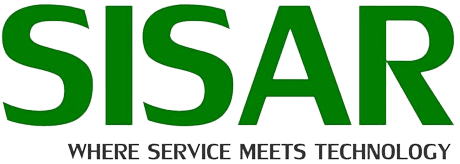Introduction
Identity and Access Management (IAM) has become a critical cornerstone of modern cybersecurity in today’s fast-paced and ever-evolving digital landscape. IAM protocols empower organizations to securely manage and control user identities and access to valuable resources, ensuring the confidentiality, integrity, and availability of sensitive data.

With the increasing reliance on digital systems and cloud services, robust IAM protocols have become indispensable in safeguarding assets and mitigating cyber threats. In this comprehensive blog, we will delve into eight essential IAM protocols, exploring their functionalities, strengths, and best practices to understand better their crucial role in ensuring cybersecurity.
OAuth 2.0 – Empowering Secure Authorization
At the forefront of IAM protocols stands OAuth 2.0, a widely adopted authorization framework that revolutionized how permissions are managed securely in the digital era. It allows users to grant limited access to resources without revealing their credentials. OAuth 2.0 extensively uses social media login integration, single sign-on (SSO), and third-party application access.
The fundamental working principle of OAuth 2.0 involves the issuance of access tokens to authorized clients, granting specific permissions that protect sensitive information from potential threats. However, handling access tokens and their lifetimes with care is essential to maintain the highest level of security and prevent unauthorized access.
OpenID Connect – Bridging Authentication and Authorization
Complementing OAuth 2.0, OpenID Connect (OIDC) is an authentication layer built on the authorization framework. Its primary purpose is to verify end-users’ identity using authentication tokens, commonly JSON Web Tokens (JWTs).
OIDC acts as a seamless and standardized bridge between user authentication and authorization, streamlining IAM implementations and enhancing user experiences across multiple platforms. Its ability to provide a unified solution for both authentication and authorization has made it a popular choice in modern IAM frameworks.
SAML (Security Assertion Markup Language) – Facilitating Single Sign-On (SSO)
SAML, an XML-based protocol, enables Single Sign-On (SSO) across different systems and domains. Its primary function is to facilitate the secure exchange of authentication and authorization data between parties, reducing the need for users to enter credentials repeatedly.
SAML’s robust security features, such as signed and encrypted assertions, make it a preferred choice for organizations, especially in enterprise environments. However, implementing SAML can be complex due to its XML-based structure, requiring careful planning and integration to ensure seamless operation.
LDAP (Lightweight Directory Access Protocol) – Centralizing Identity Data
LDAP is a protocol that provides
- Accessing and Managing Directory Services
- serving as a centralized repository for user identities,
- credentials, and
- access control information.
It is widely used to efficiently manage user accounts, groups, and permissions in organizations. LDAP simplifies user administration and ensures consistency across various applications and services by providing a centralized source of truth for identity data.
Also, Its role in streamlining IAM processes is invaluable for organizations seeking a comprehensive identity management solution, particularly in large and complex infrastructures.
Kerberos – Ensuring Secure Authentication
Kerberos is a network authentication protocol designed to deliver robust authentication for users and services over non-secure networks.
Employing secret-key cryptography, Kerberos enables secure communication and mutual authentication between entities. It has found significant use in Windows Active Directory environments, providing a secure authentication mechanism for users and machines within the domain. However, the management of cryptographic keys and complexities of implementation may present challenges in heterogeneous environments, necessitating careful configuration and maintenance.
RADIUS (Remote Authentication Dial-In User Service) – Enhancing Remote Access Security.
RADIUS is a widely adopted centralized authentication, authorization, and accounting (AAA) services protocol. Initially developed for dial-up connections, it has evolved to support various network access scenarios, including VPNs and wireless networks.
RADIUS empowers organizations to securely control access to their networks and resources, particularly in remote and distributed environments. Its scalability and ability to manage user access make it an essential protocol for bolstering network security and protecting against unauthorized access and potential attacks.
XACML (eXtensible Access Control Markup Language) – Implementing Fine-Grained Access Control
XACML, an XML-based language and protocol, is vital in providing fine-grained access control for resources. It empowers organizations to define intricate access policies considering various attributes and conditions before granting or denying access. XACML promotes attribute-based access control (ABAC), where access decisions rely on user, resource, and environmental characteristics.
By adopting XACML, businesses can exercise precise control over access rights, mitigating the risks of data breaches and insider threats. However, implementing XACML may require careful planning and integration with existing IAM systems.
SCIM (System for Cross-domain Identity Management) – Streamlining User Provisioning
SCIM, an HTTP-based protocol, simplifies user provisioning and management across different systems and domains. It enables automated and secure exchange of identity information between identity providers and service providers. SCIM proves especially useful in cloud-based environments where user management and onboarding require seamless integration.
Embracing SCIM reduces administrative overhead, minimizes errors, and enhances security by ensuring consistent and up-to-date identity information across platforms. Organizations can efficiently manage user lifecycles, access privileges, and entitlements with SCIM, optimizing IAM processes and reducing potential security vulnerabilities.
Conclusion
In the dynamic realm of cybersecurity, IAM protocols are essential for safeguarding digital environments and sensitive data. From OAuth 2.0 empowering secure authorization to SCIM streamlining user provisioning, these eight fundamental protocols play distinct roles in ensuring a robust IAM framework.
Organizations must stay abreast of the latest IAM protocols and best practices to navigate the ever-changing threat landscape. These technologies, tailored to individual, organizational needs and environments, will fortify security measures, instill user trust, and adhere to compliance requirements. By proactively embracing these IAM protocols, businesses can safeguard their digital assets, maintain the integrity of their systems, and confidently face the challenges of tomorrow’s cybersecurity landscape. With IAM protocols as their allies, organizations can forge ahead in the digital age with resilience and confidence in their cybersecurity defenses.






